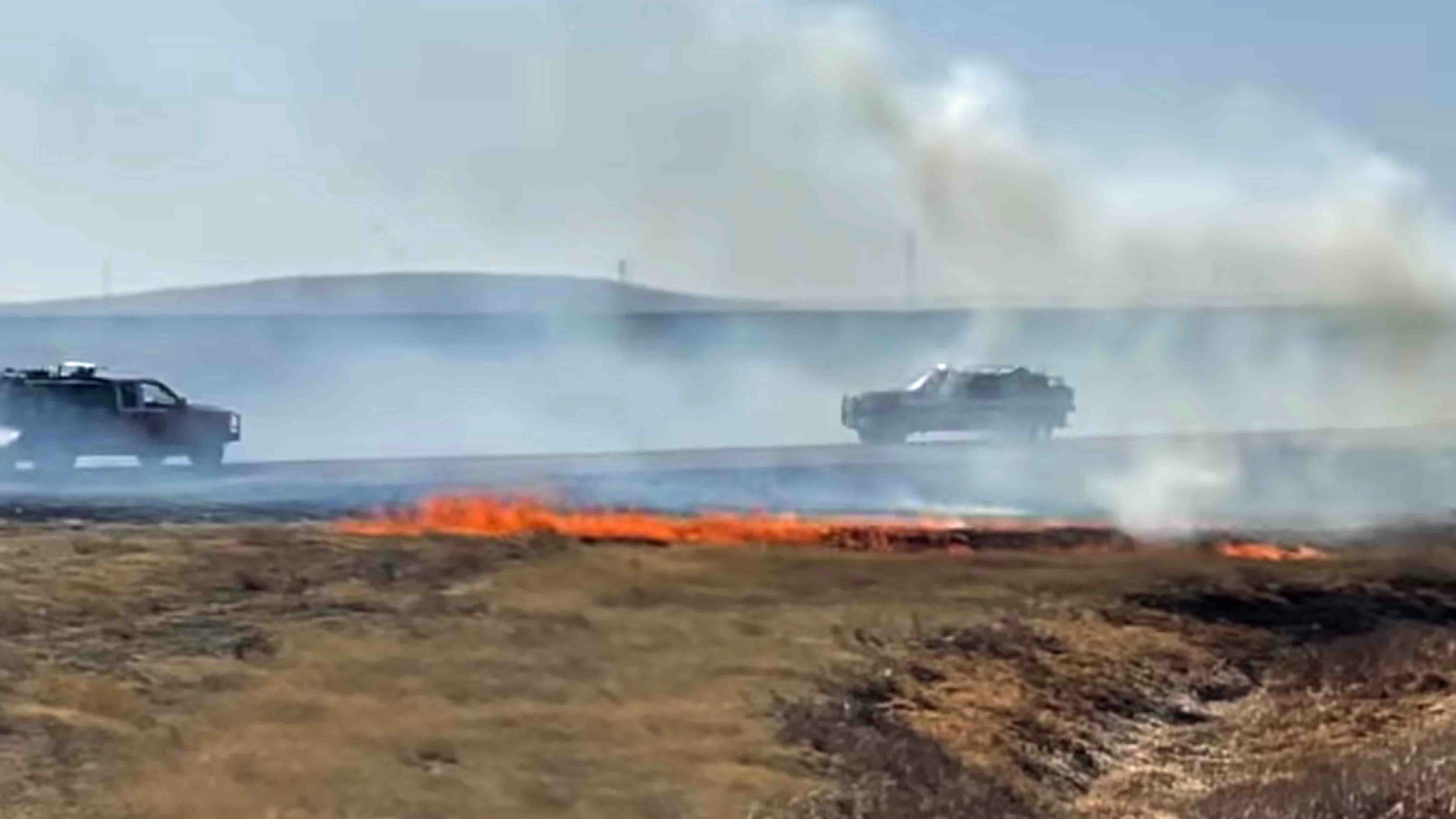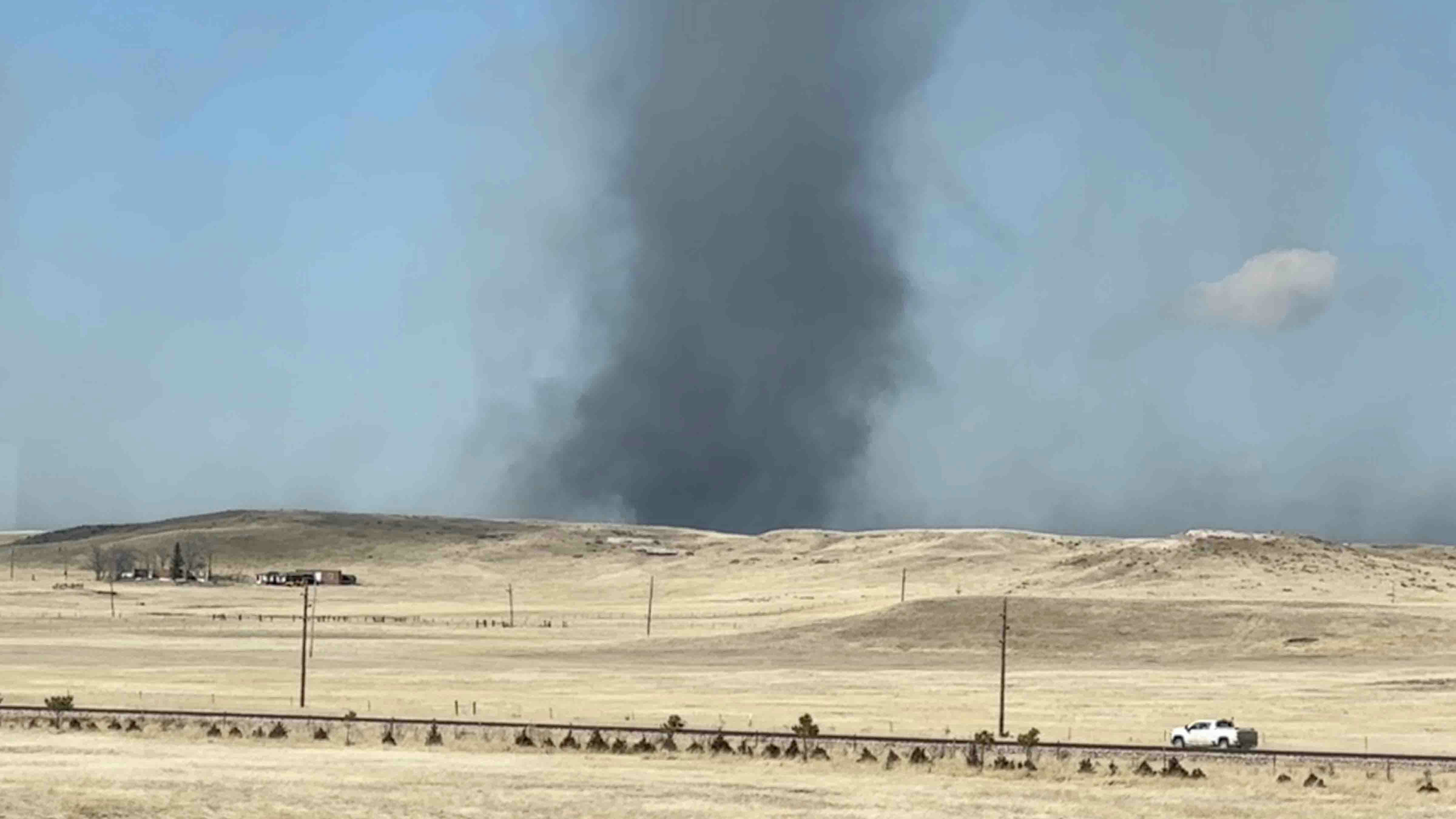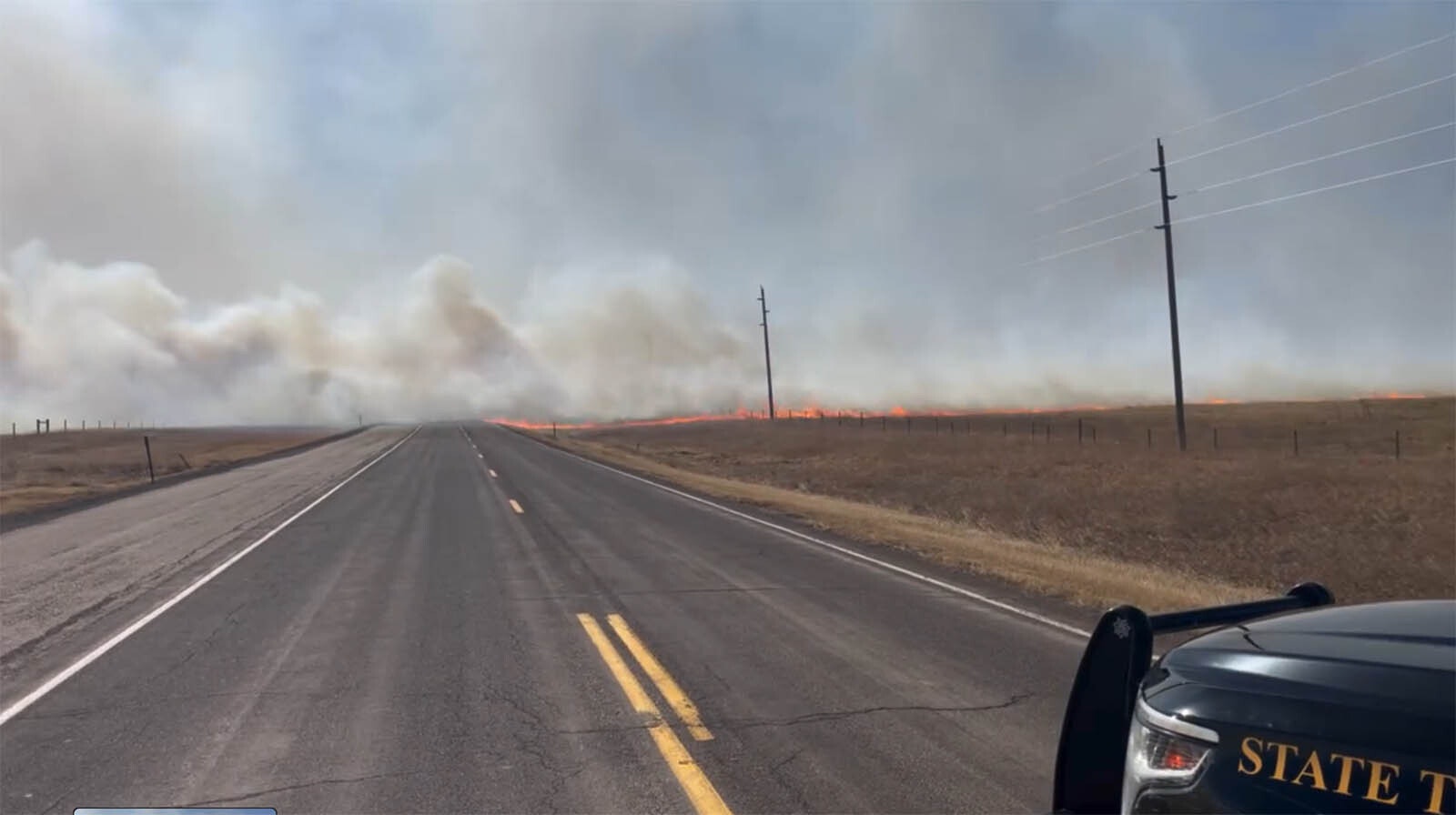A handful of large, rapidly spreading grassfires around Wyoming in the last few weeks has people wondering if it’s a sign that the 2024 wildfire season could be devastating for the Cowboy State.
And it’s not just folks in those communities who are worried. US. Sen. John Barrasso, R-Wyoming, said these fires are further proof of a “wildfire crisis” in the United States.
At a Tuesday meeting of the U.S. Senate Committee on Energy and Natural Resources, Barrasso spoke about the findings of the Wildland Fire Mitigation and Management Commission and emphasized his point by referring to one of the recent grassfires that threatened homes and livestock near Cheyenne.
“Just 12 days ago, the Happy Jack Fire threatened homes and infrastructure in and around our state Capitol in Cheyenne,” he said. “And as you pointed out, Mr. Chairman, that fire was in February. This is very early for fire season.”
In the last three weeks, at least a half dozen wildfires have sparked around Wyoming. For Barrasso, whose also the ranking member of the committee, they’re smaller signs of a much larger issue that requires federal attention.
“This fire serves as a sobering reminder that we are in a wildfire crisis,” he said. “And the crisis is not going to solve itself.”
Moist Summer, Dry Winter
The Happy Jack Fire burned 6,616 acres beginning March 1 and the cause of the blaze remains under investigation.
Jason Caughey, fire chief for the Laramie County Fire Authority, said the Happy Jack Fire was one of three significant wildfires in Laramie County in the last few weeks.
“The Mile Marker 352 Fire, just off Interstate 80 west of Cheyenne, was roughly 2,200 acres,” he said about another blaze that happened a week before. “The cause was a mechanical failure of a motor vehicle on the interstate.”
Another fire near Alden burned about 4,000 acres and is under investigation, Caughey said.
The common perception is that high winds, dry vegetation and the lack of snow during the 2023-2024 winter season are the primary reasons these fires spread so quickly. Caughey acknowledged these as important factors, but cited another often-overlooked reason that has — and will continue to — make things worse for the upcoming spring, summer and fall fire seasons.
“The wet summer that we had (last year) produced a lot of extra fuel,” he said. “That volume of fuel adds to the size and speed at which the fires are currently growing.”
Caughey said the cheatgrass and other prairie grasses in the region usually grow between 12 and 16 inches tall. After last year’s wet summer, the grasses were 24 inches, and even taller in some areas.
“A moist summer and dry winter have created a very volatile fuel load in our region,” he said.
Power Behind It
Laramie County isn’t the only Wyoming county beset by pre-spring wildfires. Campbell County has been dealing with “a high number of outdoor fires” over the same two-week period, said county Fire Marshal Stuart Burnham.
The largest of these fires burned around 469 acres near Savageton about 32 miles from Gillette. Burnham said the cause of the fire was most likely powerlines in the area.
“Once we noticed that there were power lines in the area where it burned, we contacted the local power authority to come down and look at it,” he said. “We believe that it was the power lines due to the location of where it was at and the wind direction.”
With the lack of moisture and ample fuel from dead and dormant vegetation, there’s a heightened risk of wildfires in northeast Wyoming, he said. With strong winds blowing, flames tend to spread quickly.
“Although there aren't any burn restrictions for Campbell County, we encourage people to be cautious and think twice before open burning, welding, and grinding activities,” Burnham said. “Anything that would cause the sparks near potential ignition sources.”
Weather Or Not
One of the most cited reasons for the recent wildfires is a mild, dry winter season.
But that’s not why Wyoming is starting to burn so early, said Cowboy State Daily meteorologist Don Day.
“Fires have to be started by something or somebody,” he said. “You need an ignition source. The recent grass fires in Wyoming have not been started by lightning, so human ignition, either by accident or arson, has to be the cause.”
Based on historical climate data, Cheyenne actually received above-average moisture in January and February. While current climatic conditions play a role in the speed and spread of wildfires, Day believes it's irresponsible to cite it as the sole or primary cause.
“Before we can start blaming the weather or climate, we need to look hard at who or why people are starting these fires,” he said. “Last year was one of the least active fire seasons in Wyoming in a long time, I think since the mid-1990s. Any upward trend in fires stopped last year, mostly because it was so wet. In my opinion, people’s carelessness or arson needs to be discussed more.”
Both the Mile Marker 352 and Savageton Fires were unintentionally caused by people, and both happened on sunny days with strong winds. Lightning is not being investigated as a source for any of the recent wildfires.
Forests And Fields
During Tuesday’s meeting of the U.S. Senate Committee on Energy and Natural Resources, Barrasso primarily focused on the urgent need to address wildfire mitigation in national forests. He invited Wyoming State Forester Kelly Norris to testify at the same meeting.
“America’s federally managed forests face serious threats,” Norris said. “Wyoming and many other states are very concerned on how a national level old-growth initiative could contradict the U.S. Forest Service’s wildfire crisis strategy. With wildfire being the No. 1 cause in the loss of old growth forests, it is imperative that the U.S. Forest Service continues to prioritize wildfire crisis.”
Outside Wyoming, there have been a number of devastating, high-profile wildfires in other Western states. Burning now in Texas is the Smokehouse Creek Fire, the largest ever to burn across that state, is nearly contained after consuming nearly 1.1 million acres.
When asked about Barrasso’s statement of a “wildfire crisis” in the United States, Caughey said he “absolutely” agrees. However, he feels the conversation should extend beyond the boundaries of national forests.
“When we think of wildfires, we think of forest fires or those California fires,” he said. “What we're recognizing right now, because of the environmental changes in our community growth across the country, is that we have more wildland-urban interface, as demonstrated by the Happy Jack Fire.”
The spread of the Happy Jack Fire threatened between 30 and 50 homes, and people and livestock were evacuated to ensure local safety, Caughey said, adding that 50 years ago, that entire area was open, empty fields completely devoid of development.
“Now, that's becoming a significant event,” he said. “All those factors are making for a more dangerous environment with wildfire across our country and locally here, as evidenced by the recent fires.”
Foreboding Flames
Because of the frequency of wildfires, Laramie County has enacted a burn ban and fire restrictions. But with the recent fires and an ongoing lack of moisture — coupled with abundant fuel grown last summer — Caughey is already anticipating a difficult fire season this summer.
“I'm hoping that we continue to receive some moisture in the form of snow,” he said. “That doesn't eliminate the existing dry fuels, but it will help us green up faster this spring, which would help slow down those fires. But yes, I'm anticipating a more significant fire threat in our area.”
Barrasso shares that sentiment, concluding his comments to the committee by asking for a “back-to-basics” approach to ensure more wildfire mitigation as the arid heat of summer approaches.
“As summer approaches, rural communities are again bracing for what will likely be another devastating wildfire season,” he said. “We can’t just keep throwing more money and more resources at the problem, we need to get back to the basics. We must start managing the forest in a serious and credible way. We need to increase the pace and scale of our wildfire mitigation activities — that includes timber harvesting and hazardous fuel reduction.”
Andrew Rossi can be reached at arossi@cowboystatedaily.com.









